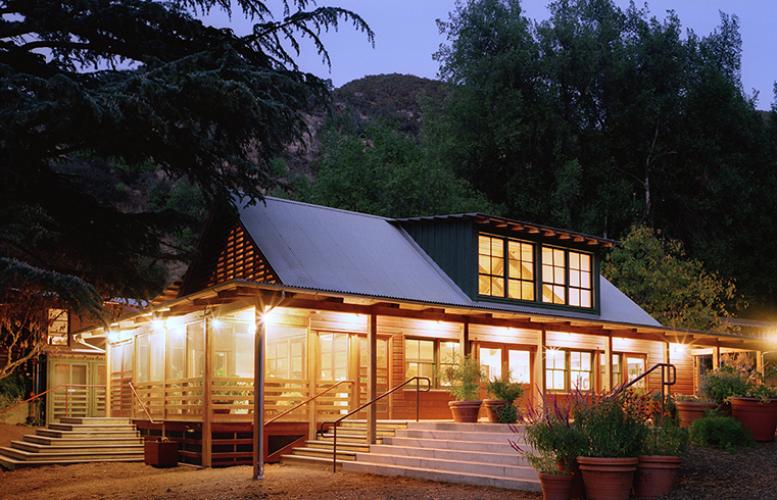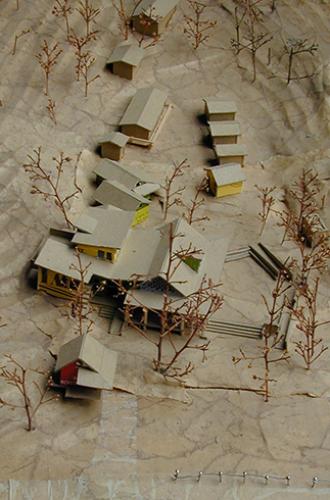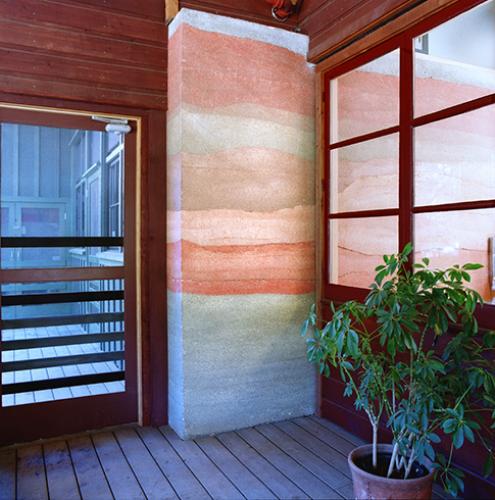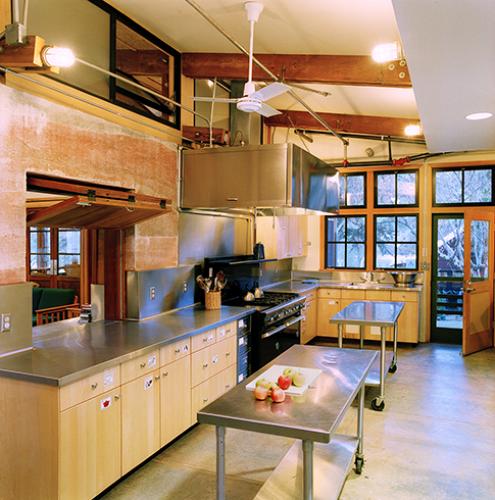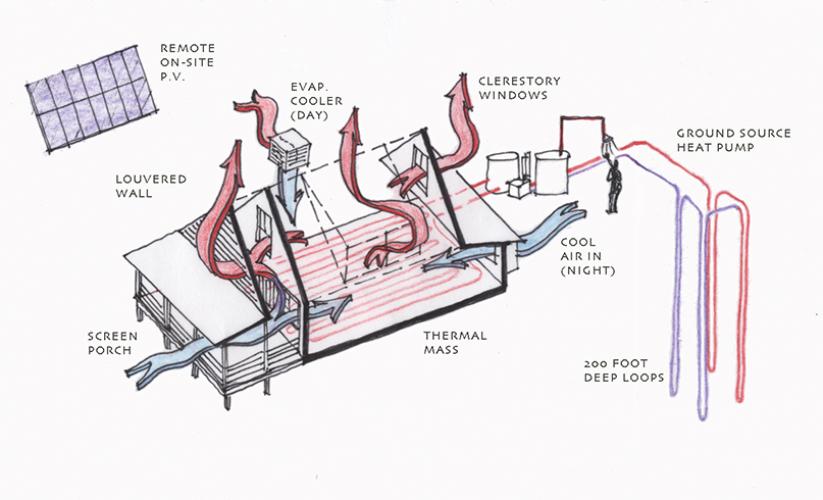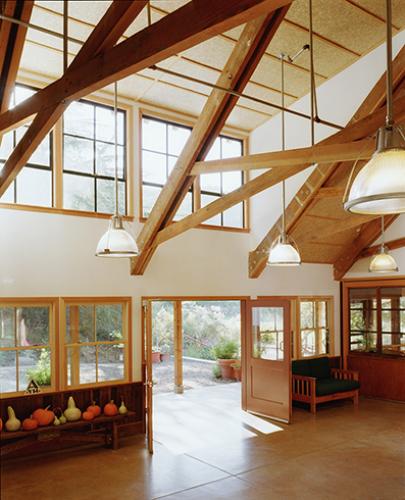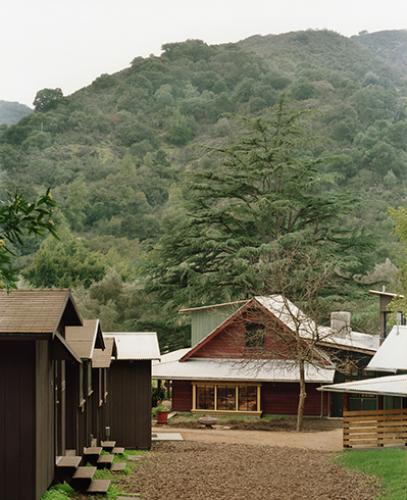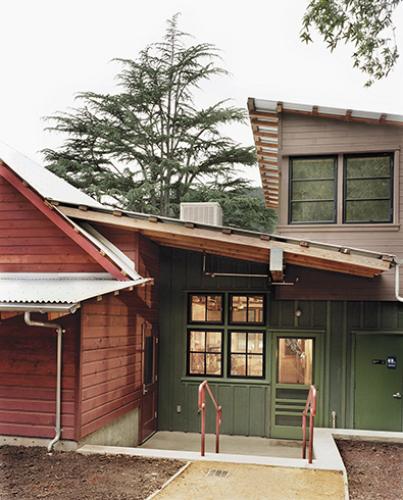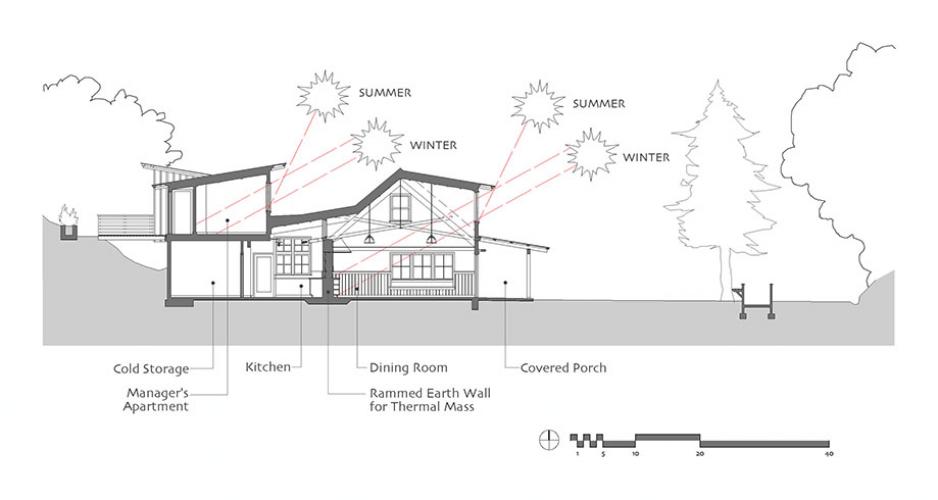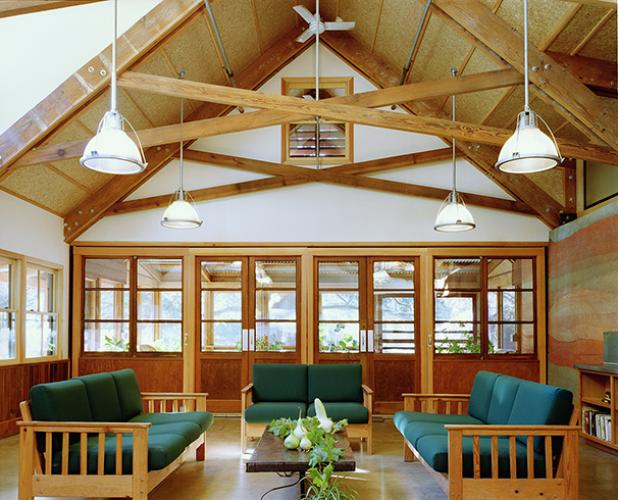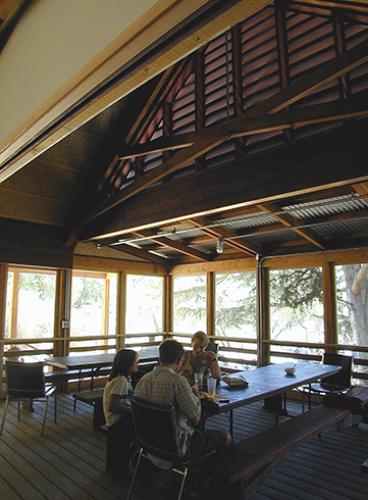Despite its constrained site, the design for the new Hostel provides flexible spaces that address the extreme temperature range of its micro-climate while harmonizing with the character of Hidden Villa – an environmental education foundation and organic farm.
Replacing the undersized hostel building built in 1941, the new facility is sited in a narrow drainage between existing cabins and a large sacred “climbing tree” to the west. The structure is pulled to the north side of the site to gain usable open space to the south and maximize winter solar gain. The most prominent volume, the Dining Hall, is sized for winter use, but expands into the screen porch space to the west via large bi-fold doors when summer camp is in session. High, natural ventilation as well as concrete slab floors and a rammed earth wall along the north mediate the extreme temperatures. A Geo-thermal radiant floor system provides heating, cooling and hot water. The building is also a model of site-sensitive ecological design in its materials – wood – salvaged from the exiting hostel building and from “tear-downs” common in the south bay.
Bringing the playful, educative, community-oriented spirit of Hidden Villa to structures that harmonize with the site’s agrarian precedent, the new hostel nurtures environmental awareness by demonstrating sustainability first hand.

